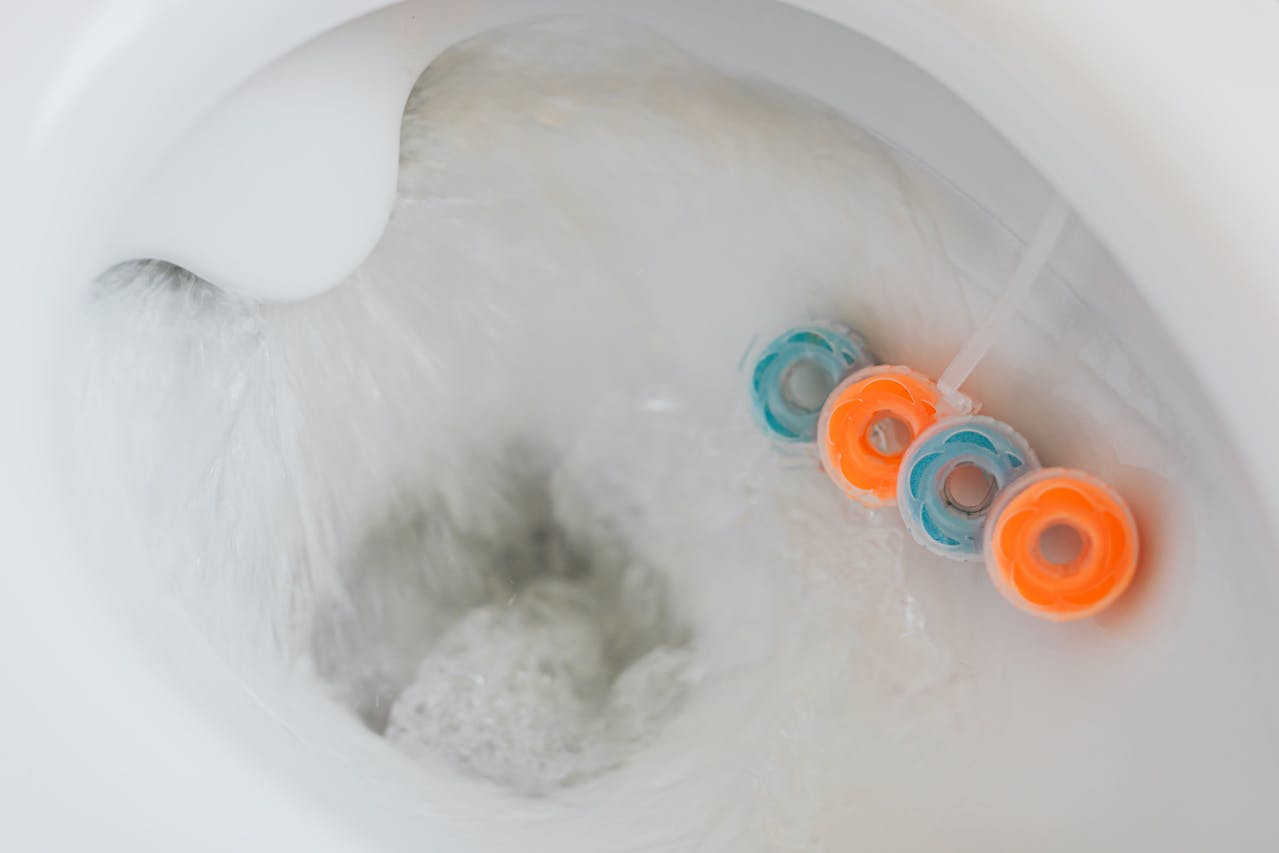Let’s face it, our old toilets are water hogs. Every flush sends gallons down the drain, and that’s just not cool for your wallet or the planet. Enter the low-flow toilet, a superhero of water conservation! Swapping out your old commode for a new, efficient model is a DIY project you can totally tackle, and it’s one of the smartest upgrades you can make for your home.
This guide will walk you through everything you need to know, from choosing the right toilet to flushing away your old one (pun intended!).
Why Go Low-Flow? The Perks You’ll Love
Before we dive into the nitty-gritty, let’s talk about why this is such a good idea:
- Slash Your Water Bill: This is a big one! Toilets are often the biggest water users in a household. Low-flow models use significantly less water per flush, meaning more money stays in your pocket.
- Be a Water Conservation Rockstar: Every drop counts, especially in drought-prone areas (hello, Arizona!). You’ll be doing your part to protect a vital resource.
- Modern Design & Features: New low-flow toilets often come with sleek designs, comfortable heights, and even dual-flush options (for liquid waste vs. solid waste, using even less water!).
- Rebates & Incentives: Many local water authorities offer rebates for installing water-efficient appliances. Check with your city or water provider – you might get some cash back!
What You’ll Need: Your DIY Toolkit
Before you start, gather these tools and materials. Most are readily available at your local hardware store.
Tools:
- Adjustable wrench
- Screwdriver (Phillips and flathead)
- Pliers
- Utility knife or putty knife
- Sponge and bucket
- Old towels or rags
- Tape measure
- Hacksaw (if you need to cut the old bolts)
- Level
- Work gloves
Materials:
- Your new low-flow toilet! (Tank, bowl, seat, and wax ring kit – make sure it’s all included or purchased separately)
- New toilet supply line (it’s always good practice to replace this)
- Toilet shims (if your floor isn’t perfectly level)
- Caulk gun and silicone caulk (mildew-resistant is a good choice)
- Gloves (for hygiene)
- Old newspaper or cardboard (to protect your floor)
Choosing Your Low-Flow Champion: What to Look For
When picking out your new toilet, you’ll see some terms and features. Here’s a quick breakdown:
- Gallons Per Flush (GPF): This is the key number! Standard low-flow toilets use 1.28 GPF or less. Older toilets can use 3.5 to 7 GPF – huge difference!
- WaterSense Label: Look for the EPA’s WaterSense label. This certifies that the toilet meets strict water efficiency criteria and performs well.
- Single Flush vs. Dual Flush:
- Single Flush: One button, one flush volume.
- Dual Flush: Two buttons or a lever that can be pushed up or down, offering a lower volume flush for liquid waste and a higher volume flush for solid waste. This is super efficient!
- Comfort Height vs. Standard Height: Comfort height toilets are a bit taller, making them easier to sit on and stand up from, especially for taller individuals or those with mobility issues.
- Rough-in Measurement: This is CRUCIAL! It’s the distance from the wall behind the toilet to the center of the drainpipe (the bolts on the floor). The most common rough-in is 12 inches, but 10-inch and 14-inch rough-ins exist. Measure this before you buy!
- To measure, find the bolts on the floor that hold your current toilet. Measure from the wall (not the baseboard) to the center of those bolts.
Time to Get Your Hands Dirty: Step-by-Step Installation Guide
Alright, let’s get that old toilet out and the new water-saver in!
Part 1: Removing the Old Toilet (Say Goodbye to the Water Hog!)
- Turn Off the Water: Find the shut-off valve on the wall behind or near your toilet. Turn it clockwise until the water flow stops completely.
- Flush to Empty: Flush the toilet to empty the tank and bowl as much as possible. Hold the handle down to get out every last drop.
- Sponge It Dry: Use a sponge to soak up any remaining water in the tank and bowl. Wring it out into a bucket. This prevents messy spills.
- Disconnect the Supply Line: Using your adjustable wrench, loosen the nut connecting the water supply line to the toilet’s fill valve. Have a rag ready for any drips.
- Remove the Bolt Caps: Pop off the decorative caps covering the bolts at the base of the toilet.
- Unscrew the Nuts: Use your adjustable wrench or pliers to loosen and remove the nuts from the toilet’s base bolts. They might be a bit rusty, so be patient. If they’re really stubborn, you might need a hacksaw to cut them.
- Wiggle and Lift: Gently rock the toilet side to side to break the wax seal. Once it’s loose, carefully lift the toilet straight up and off the flange. Be prepared – it’s heavier than it looks! You might want a helper for this part.
- Dispose of the Old Toilet: Check with your local waste management for proper disposal of old toilets. Some recycling centers accept them.
- Scrape the Old Wax Ring: Use your putty knife or utility knife to completely scrape off all the old wax from the flange on the floor. Get it super clean! This is important for a good seal with the new toilet.
- Inspect the Flange: Check the toilet flange (the ring on the floor where the toilet sits). Make sure it’s not cracked or damaged. If it is, you’ll need to repair or replace it before installing the new toilet. You can often buy repair kits for flanges.
Part 2: Installing Your New Low-Flow Toilet (Welcome to Efficiency!)
- Install the New Toilet Bolts: If your new toilet came with new bolts, insert them into the slots on the flange, positioning them correctly for your toilet’s base.
- Prepare the Wax Ring: Your new wax ring might have a plastic or rubber horn, or it might just be a plain wax ring. Place the wax ring (with the horn facing down, if applicable) firmly onto the bottom of the toilet bowl’s drain opening. Don’t press it too hard, just make sure it’s seated properly. Pro Tip: Some people prefer to place the wax ring directly on the flange, but putting it on the toilet bowl can be easier.
- Carefully Position the Toilet: With a helper if needed, carefully lift the new toilet and align the bolt holes in its base with the bolts on the flange. Gently lower the toilet straight down onto the bolts, making sure the wax ring makes contact with the flange. Don’t rock or twist it!
- Press Down and Seat the Seal: Once the toilet is in place, press down firmly and evenly on the toilet bowl to compress the wax ring and create a watertight seal. Give it a good, solid push.
- Secure the Nuts: Place the washers and nuts onto the toilet bolts. Hand-tighten them first, then use your adjustable wrench to tighten them. DO NOT overtighten! This can crack the porcelain. Tighten alternately, a little on one side, then a little on the other, until the toilet is snug and doesn’t rock.
- Check for Level: Use your level to ensure the toilet is perfectly level. If it’s not, use toilet shims (small plastic wedges) under the base to level it out. Once level, snap off any excess shim material.
- Install the Toilet Tank (if separate): If your toilet came with a separate tank, follow the manufacturer’s instructions to attach it to the bowl. This usually involves rubber gaskets and bolts that pass through the bowl and are tightened from underneath.
- Connect the Supply Line: Attach your new toilet supply line from the shut-off valve to the fill valve on the underside of the toilet tank. Hand-tighten first, then use your wrench to tighten another quarter to half turn. Don’t overtighten!
- Turn On the Water: Slowly turn the water shut-off valve counter-clockwise to open the water supply. Check for any leaks at the supply line connections and around the base of the toilet.
- Install the Toilet Seat: Follow the instructions for your new toilet seat. This is usually pretty straightforward, involving two bolts that pass through holes in the bowl.
- Caulk the Base: Once you’re sure there are no leaks, apply a thin bead of mildew-resistant silicone caulk around the base of the toilet where it meets the floor. This creates a neat finish and prevents water from seeping underneath (and makes it easier to clean!). Smooth it with a wet finger for a professional look. Leave a small gap at the back for any potential future leaks to become visible.
- Wait and Test: Let the caulk cure for a few hours (or as directed by the caulk manufacturer). Then, it’s time for the moment of truth! Flush your new low-flow toilet a few times to ensure everything is working correctly and there are no leaks.
Post-Installation Tips for Maximum Water Savings
- Regular Leak Checks: Periodically check for leaks. Add a few drops of food coloring to the tank. If the color appears in the bowl without flushing, you have a leak in the flapper valve.
- Educate Your Household: Let everyone know about the new low-flow toilet and how it works, especially if it’s a dual-flush model.
- Maintenance: Keep your toilet clean and free of mineral buildup to ensure optimal performance.
You’ve done it! You’ve successfully installed a low-flow toilet and taken a big step towards a more water-efficient home. Enjoy the savings and the satisfaction of knowing you’re doing your part for the planet!


Leave a Reply